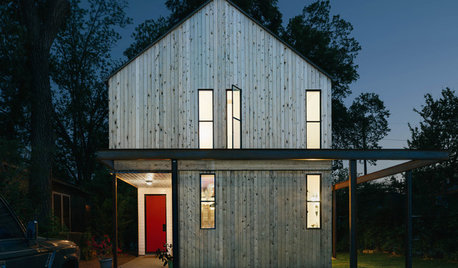flexible duct versus rigid duct
jkmc
15 years ago
Featured Answer
Comments (13)
baymee
15 years agoRelated Professionals
Downey Solar Energy Systems · Mokena Solar Energy Systems · Riverside Solar Energy Systems · Torrington Solar Energy Systems · Atlanta Home Automation & Home Media · Bozeman Home Automation & Home Media · Framingham Center Home Automation & Home Media · Los Angeles Home Automation & Home Media · Pittsburgh Home Automation & Home Media · Richardson Home Automation & Home Media · Richfield Home Automation & Home Media · Rowland Heights Home Automation & Home Media · Shawnee Fireplaces · Parkland Fireplaces · Saint Charles Fireplaceszl700
15 years agoryanhughes
15 years agothull
15 years agospeedracer2013
15 years agofre0
14 years agoalphonse
14 years agofluffybunnysui
14 years agobrickeyee
14 years agotaffaand_yahoo_com
13 years agojenet85
12 years agoKolby King
7 years ago
Related Stories

KITCHEN DESIGNHave Your Open Kitchen and Close It Off Too
Get the best of both worlds with a kitchen that can hide or be in plain sight, thanks to doors, curtains and savvy design
Full Story
MOST POPULARHow to Remodel the Laundry Room
Use this step-by-step guide to figure out what you want and how to make it happen
Full Story
HEALTHY HOMEGet Cleaner Indoor Air Without Opening a Window
Mechanical ventilation can actually be better for your home than the natural kind. Find out the whys and hows here
Full Story
GREAT HOME PROJECTSHow to Add a Radiant Heat System
Enjoy comfy, consistent temperatures and maybe even energy savings with hydronic heating and cooling
Full Story
MATERIALSInsulation Basics: What to Know About Spray Foam
Learn what exactly spray foam is, the pros and cons of using it and why you shouldn’t mess around with installation
Full Story
DECORATING GUIDES7 Home Purchases Worth the Splurge
Make buyer's remorse over furniture, textiles and more a thing of the past with this wise purchasing advice
Full Story
MOST POPULARHouzz Tour: Elbow Grease and Steel Create a Modern Texas Farmhouse
Talk about DIY. This couple acted as architect, interior designer and general contractor to build a one-of-a-kind home on a budget
Full Story
MATERIALSMaterials Workshop: Polycarbonate — a Low-Cost Alternative to Glass
Looking for something lighter, stronger and less expensive than glass? Multiwall polycarbonate may be a good option
Full Story
ARCHITECTURE10 Advantages of the Humble Ranch House
Boomer-friendly and not so big, the common ranch adapts to modern tastes for open plans, outdoor living and midcentury mojo
Full Story
KITCHEN APPLIANCES9 Places to Put the Microwave in Your Kitchen
See the pros and cons of locating your microwave above, below and beyond the counter
Full StoryMore Discussions







cuffs054